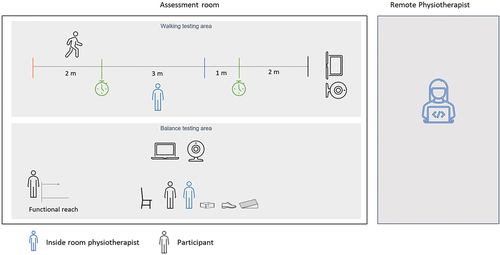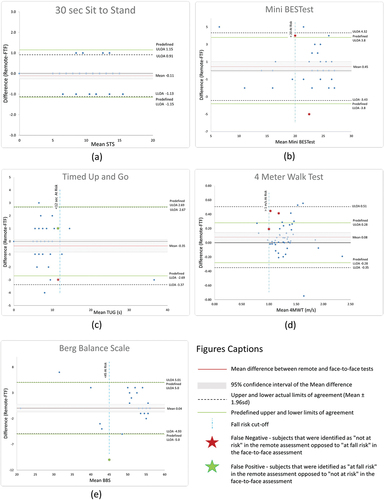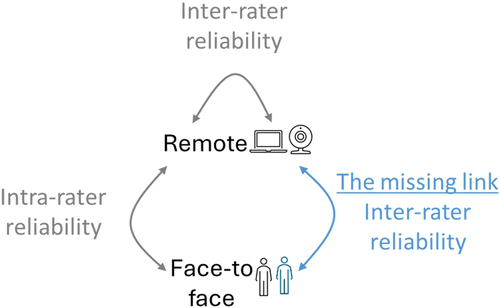Figures & data
Figure 2. Testing setup of concurrent assessments in remote and face-to-face.

Table 1. Characteristics of the study population.
Table 2. Physical test results measured in remote and face-to-face settings, and their interclass correlation (N = 48).
Figure 3. Bland and Altman plots.

Table 3. Pearson Correlation results (r) between the five tests administered in the remote format (N = 48).

